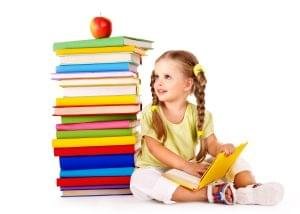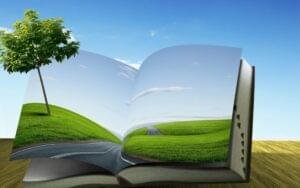There are many different reading styles, which are influenced by the text being read as well as the reader’s goals. We read novels in a different way than we read introductory statistics books. Yet, how we read a book will also depend on whether we are reading it for enjoyment or for literary analysis.
A pleasure reader becomes engrossed in the narrative, gets to know the characters, and wonders what will happen. Yet, a reader who analyzes a book seeks out solutions to certain problems. How is the story organized? What are the characters’ names and descriptions? What techniques does the author employ in writing? What genre does it fall under?
aims of reading
- Imagine you are researching a new subject or field. By reading broadly rather than intensively, you start by looking for general knowledge. To familiarize yourself with the specialized literature, you study reading lists (books, articles, compendiums). Are there any related websites and what resources does the library have?
- The early stages of writing, whether for a predetermined assignment or to create your own research topics, benefit from extensive reading.
- You will eventually need to focus more specifically on the subject if you plan to write a thesis on it. Seek for information that is immediately pertinent to your subject and the issues you are trying to answer. Do you think you can use this in your text? Also, you will need to study the materials more thoroughly than you did during the earlier reading stages of exploration.
- Talk with the texts you are reading. Learning to apply knowledge in many contexts and settings is a key component of studying. Everything of your reading ultimately leads to writing—whether it’s a thesis, an exam paper, a project report, a semester assignment, or a presentation for your study group.
- Not all texts are equally relevant and not all writings are of high quality (see Source assessment). Develop the ability to critically and independently analyze your sources’ claims and substance as well as the text itself. What, for instance, makes a text so essential that it is made obligatory reading for a course? What connections exist among the many works on the reading list?
Viewing a text in a variety of ways
No one approach works for everyone when it comes to making the most of a text. Not every reader is the same. Practice reading actively. Attempt to change up how you read. Reading the same material three times in three different ways is one suggestion.
Three readings of the same text
- Get familiar with the text. Go over the text and create a preliminary assessment of its genre and topic. Look at the headings, subheadings, summary, and reference list if it is an article. If it’s a book, read the introduction, subject index, names index, back cover blurb, and anything else that provides context for the material. Read a few short passages. Read the introduction to each chapter of a book or the first and last sentences of an article, for instance. By doing this, you will have a better understanding of the contents of the book before you ever read it.
- Go through the text fast. The following step is to skim the entire text. Take no notes just yet (although you may add symbols in the margin – dots, lines – to mark particular points of interest). Continue reading if you don’t comprehend anything. Continue reading if you don’t comprehend anything at all. You will have several opportunities to read the content again in the future. Use this technique to read a book one chapter at a time, for instance. While reading novels or other lengthy materials, it is frequently beneficial to break the text up into manageable parts.
- Go through the text fast. The following step is to skim the entire text. Take no notes just yet (although you may add symbols in the margin – dots, lines – to mark particular points of interest). Continue reading if you don’t comprehend anything. Continue reading if you don’t comprehend anything at all. You will have several opportunities to read the content again in the future. Use this technique to read a book one chapter at a time, for instance. While reading novels or other lengthy materials, it is frequently beneficial to break the text up into manageable parts.
Then
Take a break once you are comfortable with the text entirely. But make sure you go back and quickly read the content again pretty soon – maybe after a day or two, or even a week. You’ll likely interpret it differently. Also, talking with other students about the literature you study is usually beneficial.
Pose inquiries
Pose inquiries to the text. Make an effort to “push” it to give you answers. Reading becomes easier and more fascinating when you try to explain whatever you are unsure of or do not understand. Depending on why you are reading, ask various questions, ranging from general ones about the text’s agenda, message, and reasoning to detailed ones about certain terms and concepts or what a text sample is meant to show. The purpose of the text is to serve as a tool for you as you consider your topic and thesis, not to think for you.
Exercise
Answer the following questions after reading a text from your reading list: What is the topic? What is the purpose of the study? What topics are covered, what conclusions are drawn, and how are they arrived at? Might any of the findings help you with your thesis writing?
Trying to find context
You were already exposed to the text’s context or frame of reference when you first started reading it. The list of references includes the authors’ names and the titles of related publications. If the text is a book, the information might also be found in the index. There may include quotes from reviews, comments from other scholars, and other things on the rear cover. The actual text contains numerous context cues as well. They include details about, discussions with, and critiques of other researchers, along with ideas and jargon used by the larger research community. The authors have yet another clue. They, who?
You can follow the context cues, to put it simply. Understanding a text’s frame of reference will improve your comprehension of it. Your subject of study, or a broader academic framework, is pointed in your direction. The distinction between looking for a text’s context and receiving an overview is that when you look for a text’s context, you are also learning about the larger environment it inhabits. Search for hints like these
- the text’s author(s). They, who? Do they have other publications? If you do a name search, you’ll undoubtedly find webpages, encyclopedia entries, or other information on them. Do they follow a certain school of thought? If so, is there a way to learn more about it?
- The authors cite work by other scientists. What information is available about them?
- What are the text’s main ideas?
- Has the text been referenced or discussed in other books or articles? Has it undergone a review?
Searching for argument
You read a lot of argumentative literature, such as articles, theses, and academic books (books). You’ll compose argumentative texts (written assignments) for the majority of your coursework. Thus, it’s critical to comprehend what we mean when we say that a text is contentious.
Notes, summaries, and rereading
Working with a text can be done in a variety of ways, including as underlining, making notes, and rereading. In order to create a repository of notes for future use, we’ve previously advised taking notes from the literature you read for your studies. If you write up your notes (or portions of them) into succinct summaries, the archive will be even more beneficial. Learn more about making notes, summarizing, and reading books again.




